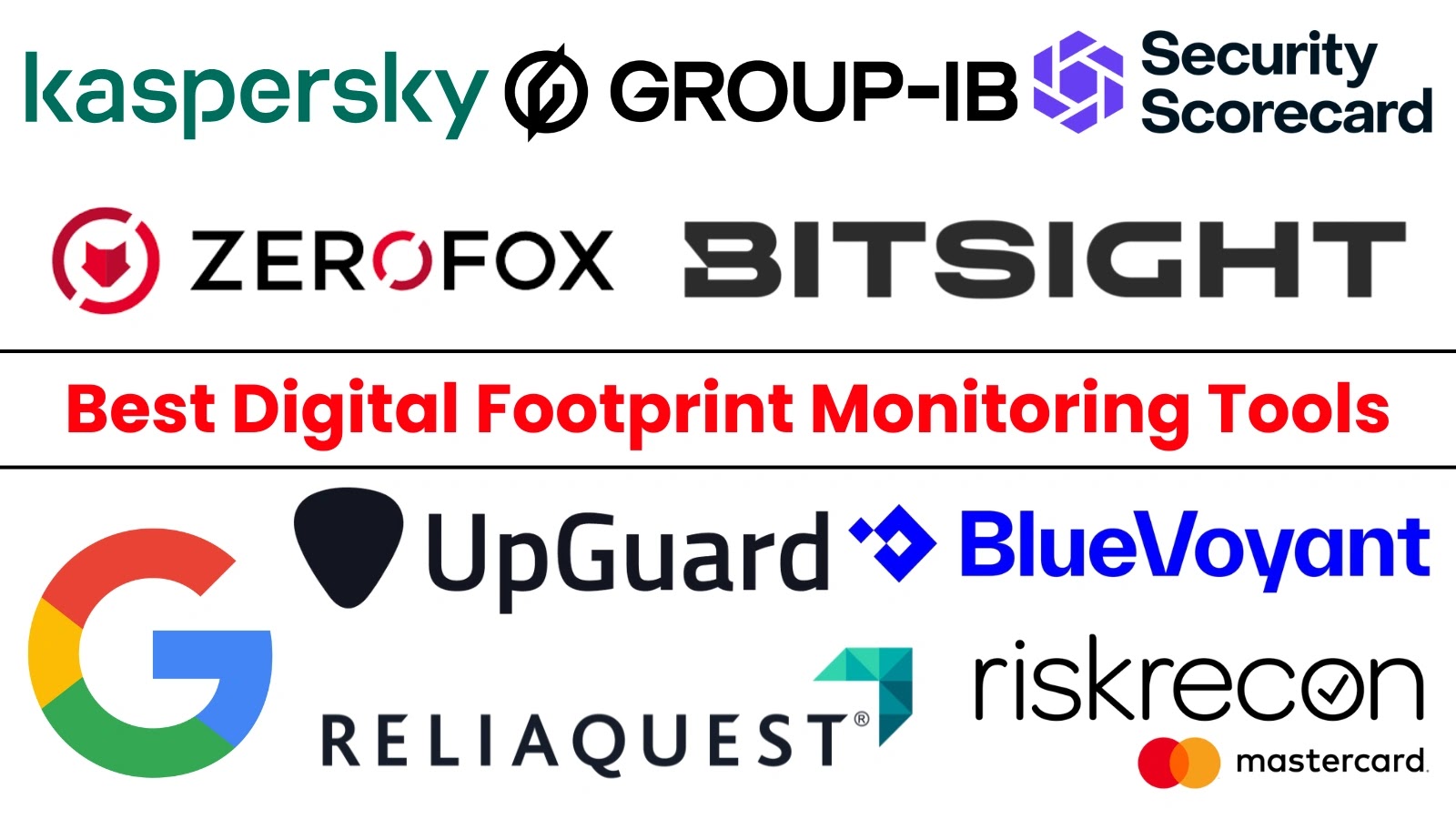
Top 10 Best Digital Footprint Monitoring Tools For Organizations in 2025
Protecting Your Organization’s Digital Footprint: Top Monitoring Tools for 2025
Organizations navigate a complex digital landscape, constantly exposed to cyber threats ranging from sophisticated cyberattacks and targeted phishing campaigns to debilitating data breaches and insidious brand impersonation. Securing an organization’s digital presence and reputation is no longer merely a best practice; it’s an operational imperative. Digital footprint monitoring tools provide critical visibility into an organization’s risk exposure across the surface web, deep web, and dark web, enabling proactive defense and rapid incident response.
What is Digital Footprint Monitoring?
Digital footprint monitoring involves continuously tracking and analyzing an organization’s online presence to identify security vulnerabilities, data leaks, brand misuse, and other potential risks. This comprehensive surveillance ensures that an organization understands what information about them exists online, where it exists, and who is interacting with it. It extends beyond traditional network security to encompass external digital assets, employee data, third-party exposures, and public-facing infrastructure. The goal is to gain deep insights into potential attack vectors and safeguard sensitive information before it can be exploited.
Why Digital Footprint Monitoring is Essential for Organizations
The ramifications of an unmonitored digital footprint can be severe, impacting an organization’s financial stability, reputation, and operational continuity. Unaddressed vulnerabilities can lead to significant data breaches, regulatory fines, and loss of customer trust. For instance, a critical vulnerability like CVE-2023-38831 (https://cve.mitre.org/cgi-bin/cvename.cgi?name=CVE-2023-38831), if left unpatched and unmonitored, could be exploited to compromise a web server, leaking sensitive organizational data. Digital footprint monitoring helps organizations:
- Identify and remediate vulnerabilities: Discover unpatched systems, misconfigured services, and exposed assets.
- Detect data breaches and leaks: Find stolen credentials, sensitive documents, and proprietary information circulating on illicit forums.
- Combat brand impersonation: Uncover fake websites, social media profiles, and phishing domains designed to defraud customers or damage reputation.
- Monitor third-party risks: Assess the security posture of vendors and partners.
- Enhance compliance: Meet regulatory requirements for data protection and privacy.
Top 10 Best Digital Footprint Monitoring Tools for Organizations in 2025
Selecting the right digital footprint monitoring tool depends on an organization’s specific needs, budget, and existing security infrastructure. Here’s a look at leading solutions offering robust capabilities for 2025:
- UpGuard: Known for its comprehensive attack surface management, UpGuard provides continuous monitoring for vulnerabilities, data leaks, and third-party risks across an organization’s digital ecosystem.
- RiskRecon (a Mastercard Company): Offers deep insights into an organization’s security posture and that of its vendors, utilizing non-intrusive scanning and analysis of publicly available data.
- SecurityScorecard: Provides an easy-to-understand A-F rating for security performance, helping organizations benchmark and improve their security posture and those of their partners.
- Bitsight: A widely recognized security ratings platform that quantifies an organization’s security performance and risk, offering continuous monitoring and actionable insights.
- Mandiant Advantage (Google Cloud): Leveraging Mandiant’s extensive threat intelligence, this platform helps organizations proactively prepare for, validate, and respond to cyber threats by understanding adversary motivations and capabilities.
- CybelAngel: Specializes in Digital Risk Protection (DRP), detecting data leaks, dark web exposures, and brand impersonation specifically tailored for large enterprises.
- Repeater (formerly Recorded Future): Combines automated data collection with human analysis to deliver a comprehensive view of external threats, including vulnerable public-facing server software like those susceptible to CVE-2023-49033 (https://cve.mitre.org/cgi-bin/cvename.cgi?name=CVE-2023-49033).
- ImmuniWeb: Offers a full spectrum of application security testing and dark web monitoring services, including AI-powered vulnerability scanning and penetration testing.
- Group-IB Digital Risk Protection: Focuses on combating digital fraud, brand abuse, and intellectual property infringement, providing extensive monitoring across all digital channels.
- ZeroFox: Delivers external cybersecurity solutions, including protection against phishing, impersonation, credential compromise, and data loss across social media and the open web.
Remediation Actions for Identified Digital Footprint Risks
Detecting risks is only half the battle; timely and effective remediation is paramount. Organizations should implement a structured approach:
- Prioritize Findings: Classify risks based on severity, potential impact, and exploitability. Address critical vulnerabilities like unpatched servers (e.g., those vulnerable to CVE-2023-2825 – https://cve.mitre.org/cgi-bin/cvename.cgi?name=CVE-2023-2825) immediately.
- Patch and Update: Regularly apply security patches and updates to all software, operating systems, and hardware.
- Remove Exposed Data: If sensitive data is discovered online, work with platform administrators or legal counsel to secure its takedown.
- Revoke Compromised Credentials: Immediately reset passwords for any accounts found in data breaches and enforce multi-factor authentication (MFA).
- Educate Employees: Conduct regular cybersecurity awareness training to prevent phishing and social engineering attacks.
- Strengthen Security Controls: Implement firewalls, intrusion detection/prevention systems (IDS/IPS), and robust access controls.
- Monitor Continuously: Maintain the use of digital footprint monitoring tools to ensure ongoing visibility and early detection of new threats.
Conclusion
The sustained security and reputation of any organization hinge on a proactive approach to managing its digital footprint. Implementing a robust digital footprint monitoring strategy, supported by advanced tools, offers the necessary visibility and intelligence to anticipate, detect, and respond to evolving cyber threats. Organizations must move beyond traditional perimeter defenses and embrace comprehensive external risk monitoring to thrive securely in the interconnected digital world.





